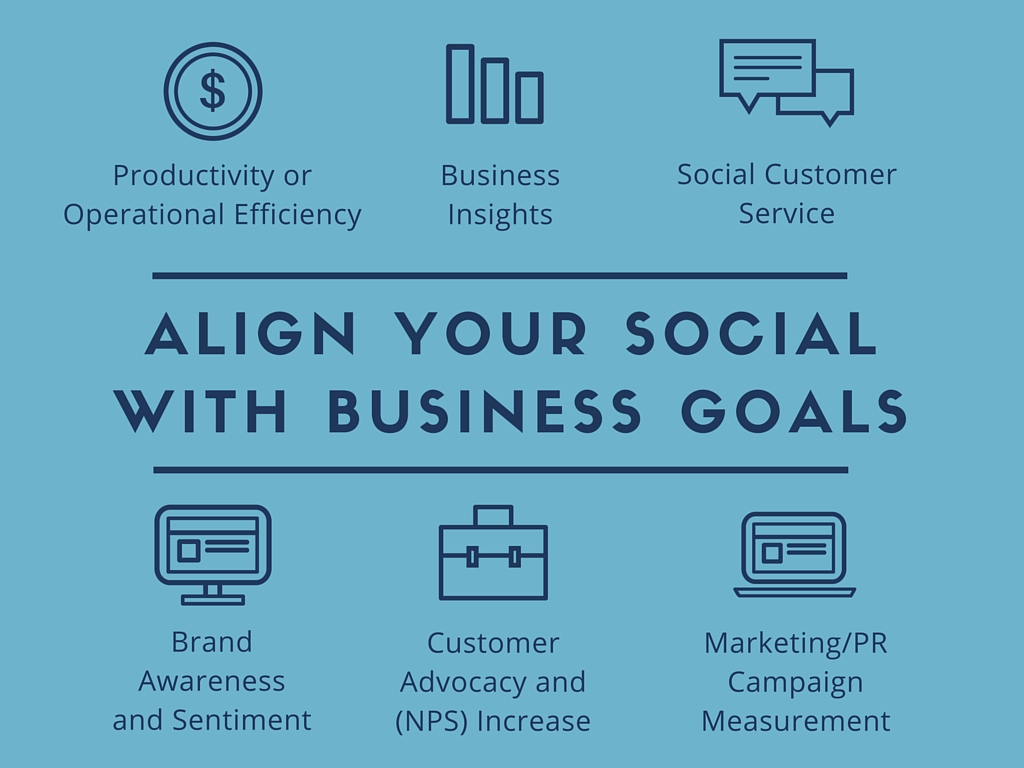
Get your FREE 30-day trial.
Start by selecting a product:
This is Step 2 in the 6 Steps to Building Your Social Media Powerhouse by @eddiecliff
How to Design Your Social Media Strategy
It is so important to avoid “social for social’s sake” and to maintain focus. Social media teams must align their social strategy with measurable business outcomes. Otherwise, the wider business will not see the value and funding will ultimately dry up. It is important as well to look at which business objectives you are chasing - is it driving more revenue or cutting costs? The former includes such things as social sales and lead generation, while the latter can range from operational efficiency to increased business insights to more cost effective customer service. A combination of both will resonate the most with the board.
The 6 steps play out like this:

Designing/Planning you Social Media: Start with the End in Mind
Traditionally many companies have built their social media presence simply because they felt they had to. They sat an intern or junior resource in the corner and charged them with the task of "doing the Facebook". As fan and follower counts grew, success was trumpeted from the rooftops.
But what’s the point? Too many senior business decision makers ask that very question after seeing slide after slide of seemingly vertical spikes in audience yet no real or tangible business outcome.
Is the problem that social media doesn’t work? Of course not. For so many organisations of all different sizes, social media delivers huge value. But because those organisations have planned their social activity around a specific outcome, they know what is working and what isn’t and they’re able to optimise accordingly.
We’ll look at how to measure success in the next post, but first we need to decide on what to measure. A great place to start is to look at how social media can be aligned with business objectives. Most commonly this would mean asking whether social media should drive more revenue or cut costs? Perhaps both? Right away at the centre of your thinking is how to deliver real value back to the business. This helps you define what your KPIs and metrics should be - giving you a “true north” to align and navigate towards.
Critical in this journey is bringing your stakeholders with you. Work with your Steering Committee (See Step 1: How to Co-ordinate Your Social Media) to establish what those objectives are and win their buy-in. If your stakeholders believe your are striving to help them achieve their aims, you will have so much more cross-department support.
When you look at cost cutting or savings, think about how to use social channels to do some or all of the following:

In terms of driving real revenue, it is usually in the area of leads, deal maturation, and actual transactions.
For instance:
Holland’s national carrier KLM’s social media channel delivers an awesome €25 million back into the company’s bottom line. Much of this derives from KLM’s ability to actually transact on social channels - up to €100,000 a week. This is done by fostering deeper customer relationships through social and then pushing discounted “distressed” inventory into their feeds in a timely manner. Furthermore, a 150-strong global team of social agents are able to provide best-practice customer service at a fraction of the cost of traditional channels such as phone support.1
Of course this isn’t an overnight journey and doesn’t always have to have a hard dollar amount at the end, but when you examine what these brands have been able to do by focussing their energies on tying social media activity to tangible business outcomes, it becomes very clear how to answer the question, “what’s the point?”
To learn more about where Social Media sits in the modern world of Marketing - Download our State of Marketing Report 2015.
For more information on enhancing your social media strategy download our #Winning at Social eBook:
Stay tuned for the next post - Step 3: How to Measure Your Social Media Success.
Reference: 1www.runwaygirlnetwork.com